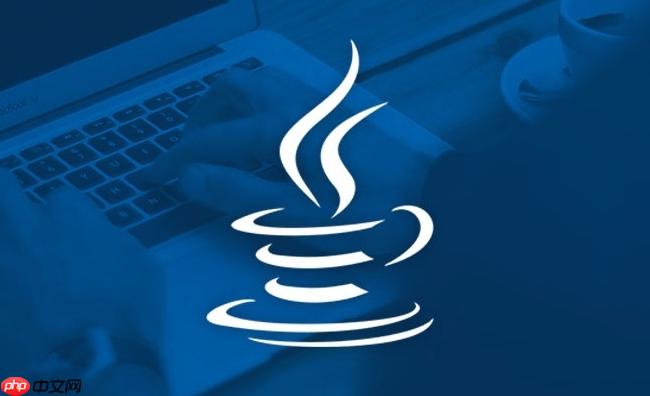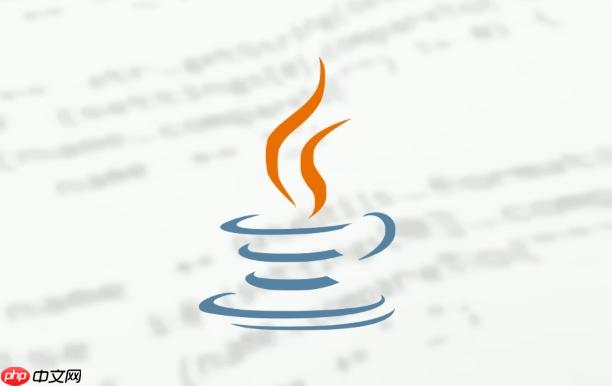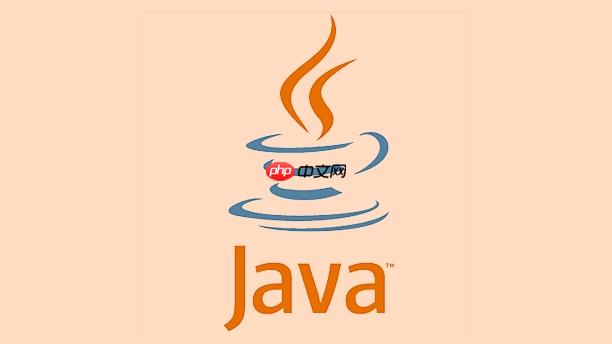completablefuture的常用组合方法包括thencombine、thencompose、allof、thenapply、thenaccept、anyof和ortimeout。其中thencombine用于合并两个独立future的结果,thencompose用于将一个future的结果作为另一个future的输入,allof用于等待多个future完成,thenapply允许对一个future的结果进行转换,thenaccept允许对结果执行操作但不返回值,anyof允许等待多个future中的任何一个完成,ortimeout用于设置超时时间。此外,处理异常的方法包括exceptionally提供默认值或恢复逻辑,handle用于同时处理正常结果和异常情况,并且相较于传统future,completablefuture具有非阻塞性、丰富的组合能力、异常处理机制及支持超时控制等优势,显著提升了异步编程的灵活性和健壮性。

使用CompletableFuture组合异步操作,核心在于将多个独立的异步任务串联或并行执行,最终得到一个整合的结果。这能显著提升程序的并发性和响应速度,尤其是在处理I/O密集型任务时。

import java.util.concurrent.CompletableFuture;
import java.util.concurrent.ExecutionException;
public class CompletableFutureExample {
public static void main(String[] args) throws ExecutionException, InterruptedException {
CompletableFuture<String> future1 = CompletableFuture.supplyAsync(() -> {
// 模拟耗时操作
try {
Thread.sleep(1000);
} catch (InterruptedException e) {
Thread.currentThread().interrupt();
return "Error in Future 1";
}
return "Result from Future 1";
});
CompletableFuture<String> future2 = CompletableFuture.supplyAsync(() -> {
// 模拟另一个耗时操作
try {
Thread.sleep(500);
} catch (InterruptedException e) {
Thread.currentThread().interrupt();
return "Error in Future 2";
}
return "Result from Future 2";
});
// 使用 thenCombine 组合两个 Future 的结果
CompletableFuture<String> combinedFuture = future1.thenCombine(future2, (result1, result2) -> {
return result1 + " and " + result2;
});
// 获取组合后的结果
String finalResult = combinedFuture.get();
System.out.println("Combined Result: " + finalResult);
// 使用 thenCompose 链接 Future
CompletableFuture<String> composedFuture = future1.thenCompose(result1 -> {
return CompletableFuture.supplyAsync(() -> {
return result1 + " processed further";
});
});
String composedResult = composedFuture.get();
System.out.println("Composed Result: " + composedResult);
// 使用 allOf 等待所有 Future 完成
CompletableFuture<Void> allFutures = CompletableFuture.allOf(future1, future2);
allFutures.get(); // 等待所有 future 完成
System.out.println("All futures completed");
// 处理异常
CompletableFuture<String> futureWithError = CompletableFuture.supplyAsync(() -> {
throw new RuntimeException("Simulated error");
}).exceptionally(ex -> {
System.err.println("Caught exception: " + ex.getMessage());
return "Recovered from error";
});
String errorResult = futureWithError.get();
System.out.println("Error Result: " + errorResult);
}
}CompletableFuture的核心在于它提供了一系列方法来组合、链接和处理异步操作的结果。 thenCombine 用于合并两个独立Future的结果, thenCompose 用于将一个Future的结果作为另一个Future的输入, allOf 用于等待多个Future完成,而 exceptionally 用于处理异常情况。

CompletableFuture有哪些常用的组合方法?
立即学习“Java免费学习笔记(深入)”;

除了上面提到的 thenCombine、 thenCompose 和 allOf,还有一些其他常用的组合方法。 例如, thenApply 允许你对一个Future的结果进行转换,而 thenAccept 允许你对结果执行一些操作,但不返回任何值。 anyOf 允许你等待多个Future中的任何一个完成。 orTimeout 允许你设置超时时间,如果Future在指定时间内未完成,则会抛出异常。
如何处理CompletableFuture中的异常?
处理 CompletableFuture 中的异常至关重要,否则未捕获的异常可能会导致程序崩溃或产生不可预测的行为。 除了 exceptionally 方法,还可以使用 handle 方法来同时处理正常结果和异常情况。 exceptionally 提供了一种简单的方式来提供一个默认值或执行一些恢复操作,而 handle 提供了更大的灵活性,允许你根据结果或异常来执行不同的逻辑。 另外,需要注意的是,如果Future抛出了受检异常,则需要在调用 get() 方法时捕获 ExecutionException 和 InterruptedException。
CompletableFuture与传统的Future相比有什么优势?
CompletableFuture 相较于传统的 Future 接口,最大的优势在于其非阻塞性和组合性。 传统的 Future 接口在调用 get() 方法时会阻塞当前线程,直到结果可用为止。 而 CompletableFuture 允许你注册回调函数,在结果可用时自动执行,而无需阻塞。 此外,CompletableFuture 提供了丰富的组合方法,可以轻松地将多个异步操作链接在一起,而传统的 Future 接口则缺乏这种灵活性。 CompletableFuture 还支持异常处理和超时控制,使得异步编程更加健壮和易于管理。 另一个关键区别在于 CompletableFuture 实现了 CompletionStage 接口,这使得它可以与其他异步组件(如 Reactive Streams)无缝集成。
以上就是Java中如何用CompletableFuture组合异步操作的详细内容,更多请关注php中文网其它相关文章!

每个人都需要一台速度更快、更稳定的 PC。随着时间的推移,垃圾文件、旧注册表数据和不必要的后台进程会占用资源并降低性能。幸运的是,许多工具可以让 Windows 保持平稳运行。

Copyright 2014-2025 https://www.php.cn/ All Rights Reserved | php.cn | 湘ICP备2023035733号